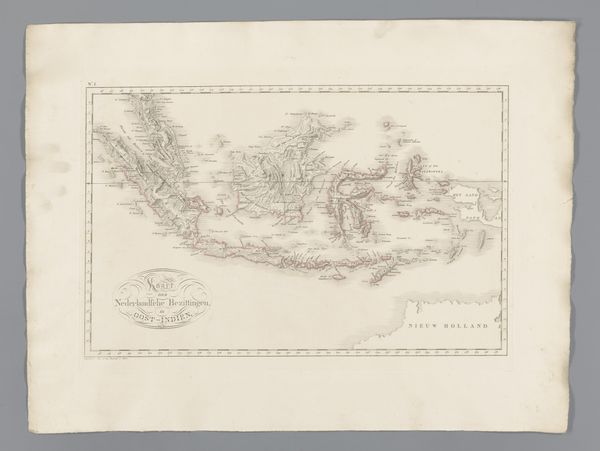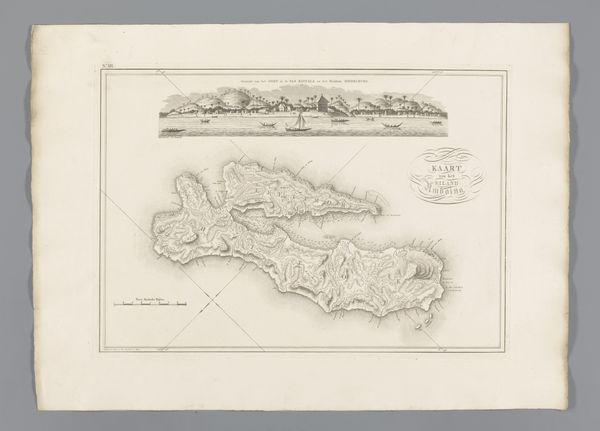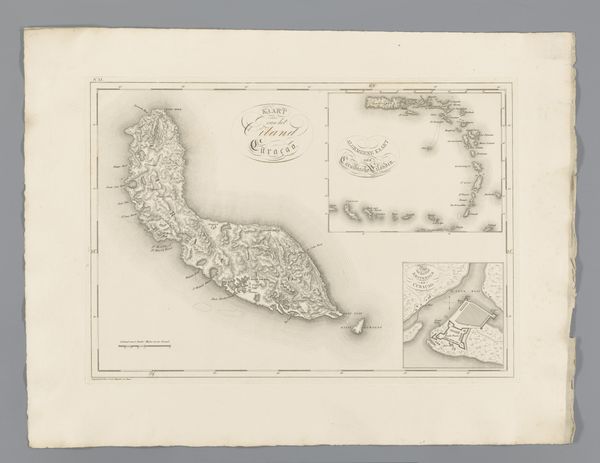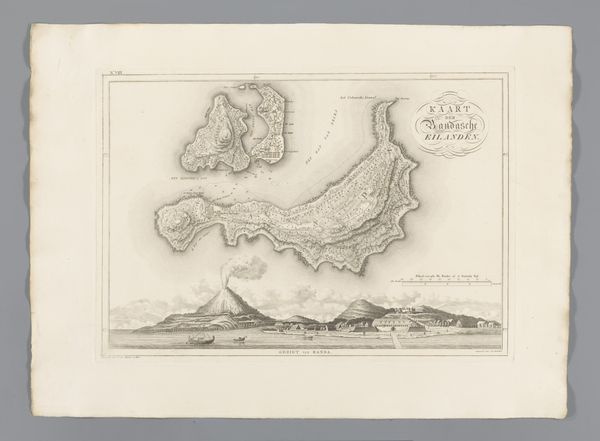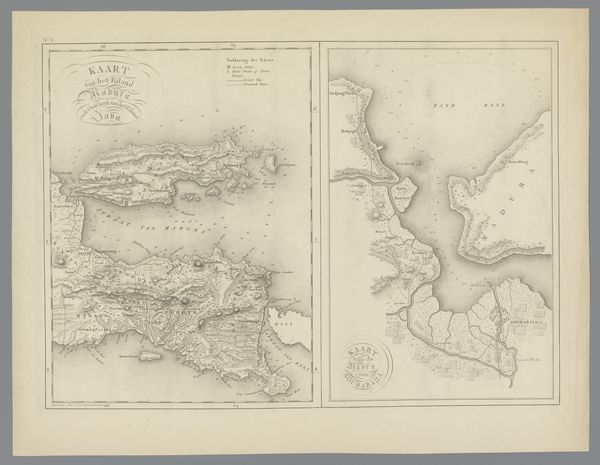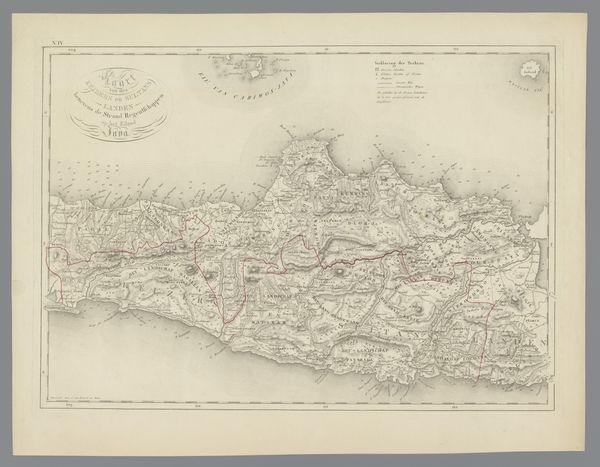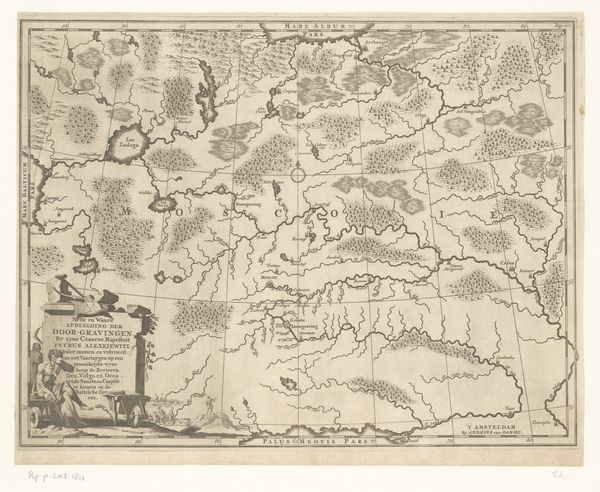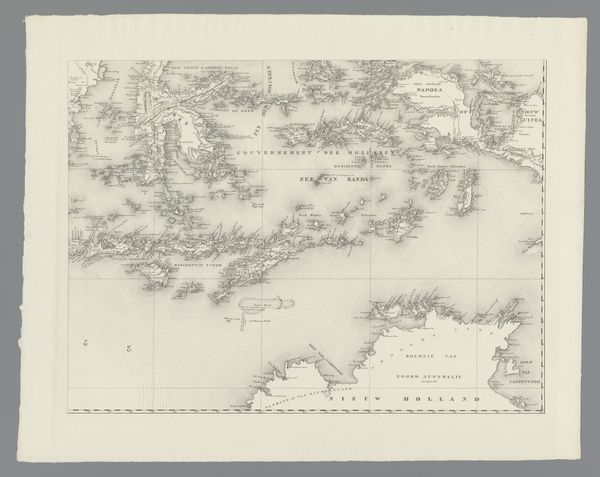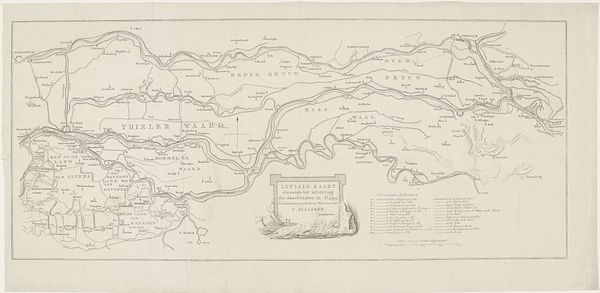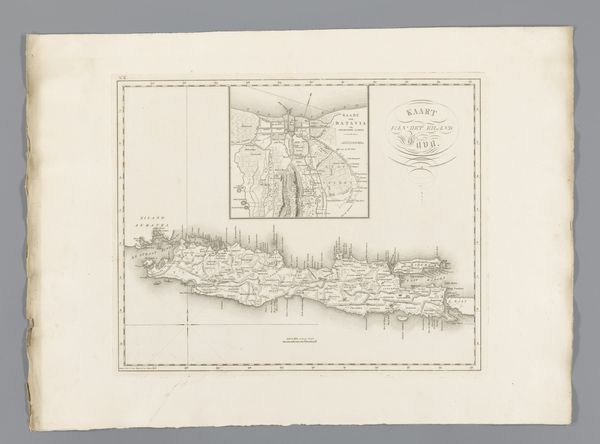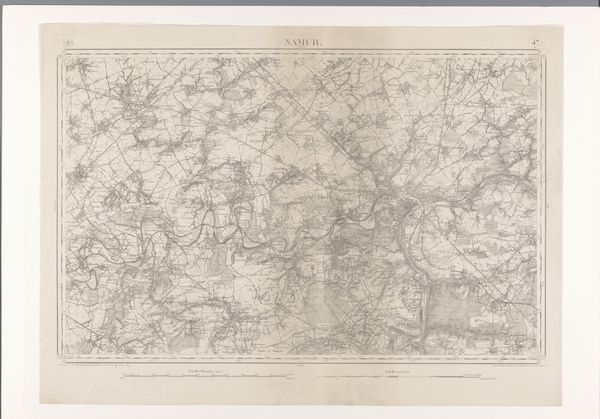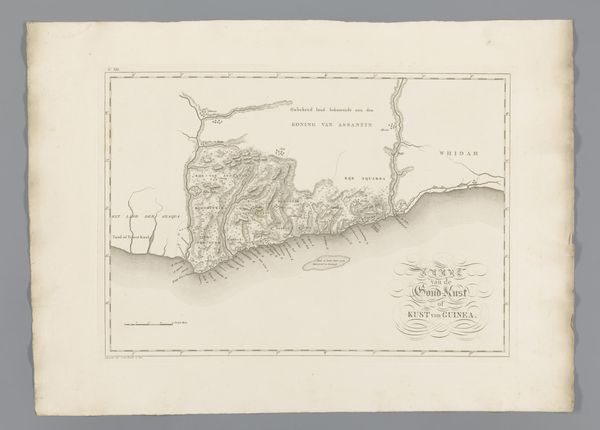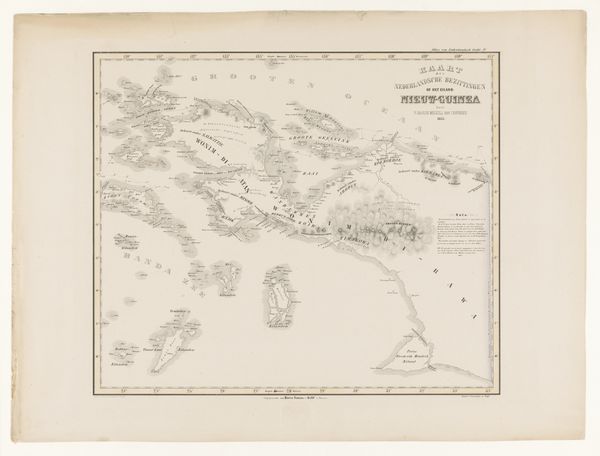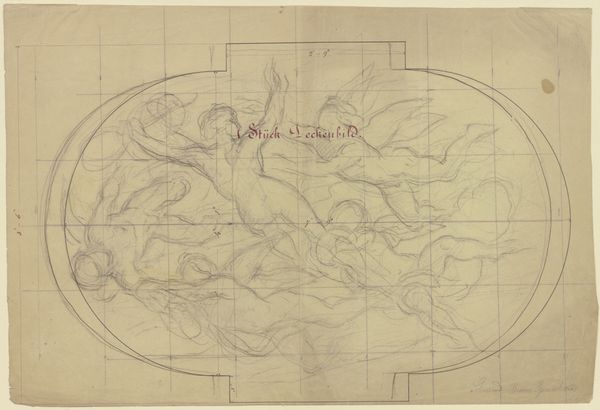
print, engraving
#
ink paper printed
# print
#
orientalism
#
engraving
#
realism
Dimensions: height 380 mm, width 536 mm
Copyright: Rijks Museum: Open Domain
Curator: Let’s turn our attention to “Kaart van Indonesië,” a map of Indonesia created around 1817, rendered in ink on paper using engraving techniques by C. van Baarsel en Zoon. The delicate lines immediately create a sense of vastness. Editor: Yes, and almost immediately, you perceive a certain austerity. The monochromatic palette really enforces that feeling, and there’s an undeniable formal elegance to the detailed coastlines. Curator: That austerity is so tied to the colonial gaze, isn’t it? Mapping has always been about power, control, legibility. To flatten these diverse islands into a single visual plane represents a real assertion of authority by the colonizer, inscribing itself onto a place, a history. Editor: Perhaps, but isn’t there an art also in the careful rendering of the archipelago's landmasses? The light etches on the paper gives an almost palpable impression of spatial relationships that is so well represented by the visual language inherent to cartography, such as the meticulous grid delineating the space. The engraver uses a fine but certain hand. Curator: Absolutely. However, that ‘art’ has tangible consequences. The level of precision allows for resource extraction, the charting of shipping lanes. Each line signifies access and control over the Indigenous populations and resources. It reflects a deep orientalism—an “objective” rendering facilitating extraction and dominance. Editor: So you're not convinced by its realism? The formal qualities indicate a particular mindset but don't necessitate it. Surely such painstaking craft can exist without colonial intent. After all, these maps guided exploration. Curator: True, however we are ignoring who defines 'exploration' here. How do Indigenous epistemologies intersect with those of colonial power structures represented? And let us not disregard how gender intertwines; women of color within colonized communities experienced heightened precarity and erasure as a result. Editor: This all informs my view in an intriguing manner, and I do perceive an element of that reality given the level of resolution, in some instances—thank you for this contextualization. I view this engraving with different eyes. Curator: I hope these insights shed some light on both its artistic properties and underlying complexities. The visual plane can be a powerful tool.
Comments
No comments
Be the first to comment and join the conversation on the ultimate creative platform.
